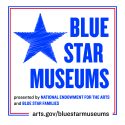Midwestern cultural identity is explored through two of its most widely cherished national figures and the art form, Regionalism, which helped link local community values to an American identity.
When Bob Dylan was asked why he left (the Midwest): “There’s no place I feel closer to now, or get the feeling that I’m part of, except maybe New York; but I’m not a New Yorker. I’m North Dakota-Minnesota-Midwestern. I’m that color. I speak that way. I’m from someplace called the Iron Range. My brains and feelings have come from there.”

Dylan at 22, he was born in Duluth, Minnesota, photo 1963 by Rowland Scherman, National Archives and Records Administration, public domain, courtesy of Wikipedia
Miles Davis: “Listen. The greatest feeling I ever had in my life was when I first heard Diz and Bird together in St. Louis, Missouri, back in 1944. I was eighteen years old and had just graduated from Lincoln High School, just across the Mississippi River in East St. Louis, Illinois. I learned all that back in St. Louis, so I always wanted to play something different than the way most trumpet players played.”
%20copy.jpg)
Born in Alton, Illinois, raised in East St. Louis, Twenty-one year old Miles Davis playing with Charlie Parker (left, with Max Roach behind Parker), 1947, photo by William P. Gottlieb, Library of Congress, Music Division, public domain, courtesy of Wikipedia
“One could argue that Midwesterners are at their most passionate in their pursuit of normalcy, when they take pride in being typical rather than unusual, when they boost their families, towns, and states as better versions of some vague, elusive American norm.” Historian Andrew Cayton, The American Midwest.

Alton, Illinois is the birthplace of Miles Davis. Stan Masters, Third Street, Alton, 1989, watercolor, Cedarhurst permanent collection; Barry Vance, Beverley, 1979, oil, Cedarhurst permanent collection, photo R. Freeman
“If nothing else, Midwestern identification with a region is about communities of human beings who decide that their sense of place unites them more than questions of religion, race, gender, class, or any other way of constructing identity.” Cayton.
FROM A REGIONALISM TO MIDWESTERN TO NATIONALISM
A dominant style of modern American art during the 1930s, Regionalism, also known as American Scene Painting, was storytelling art in a decidedly optimistic mood. Three painters led the way: Thomas Hart Benton, Grant Wood, and John Steuart Curry. Hard work, self-reliance, and community were the values immortalized in their art.

The round barn architecture was unique to the Midwest, Dan Anderson, Untitled (Round Barn), c.1990s, stoneware, Cedarhurst permanent collection; Gregor farm painting on wall, photo R. Freeman
“Regionalism’s brand of modern American art became a means of regaining the self-esteem and social respectability undercut by the Great Depression.” Art historian Erika Doss, Twentieth-Century American Art.

The family farm is a leading icon of the Midwest. Detail of Harold Gregor, Illinois Landscape #25, 1978, oil, Cedarhurst permanent collection, photo R. Freeman
Regionalism as Benton and Wood painted it, portrayed local community values as the standard for a cultural nationalism, striving to have the Midwestern ethos regarded as the essence of American national identity.





